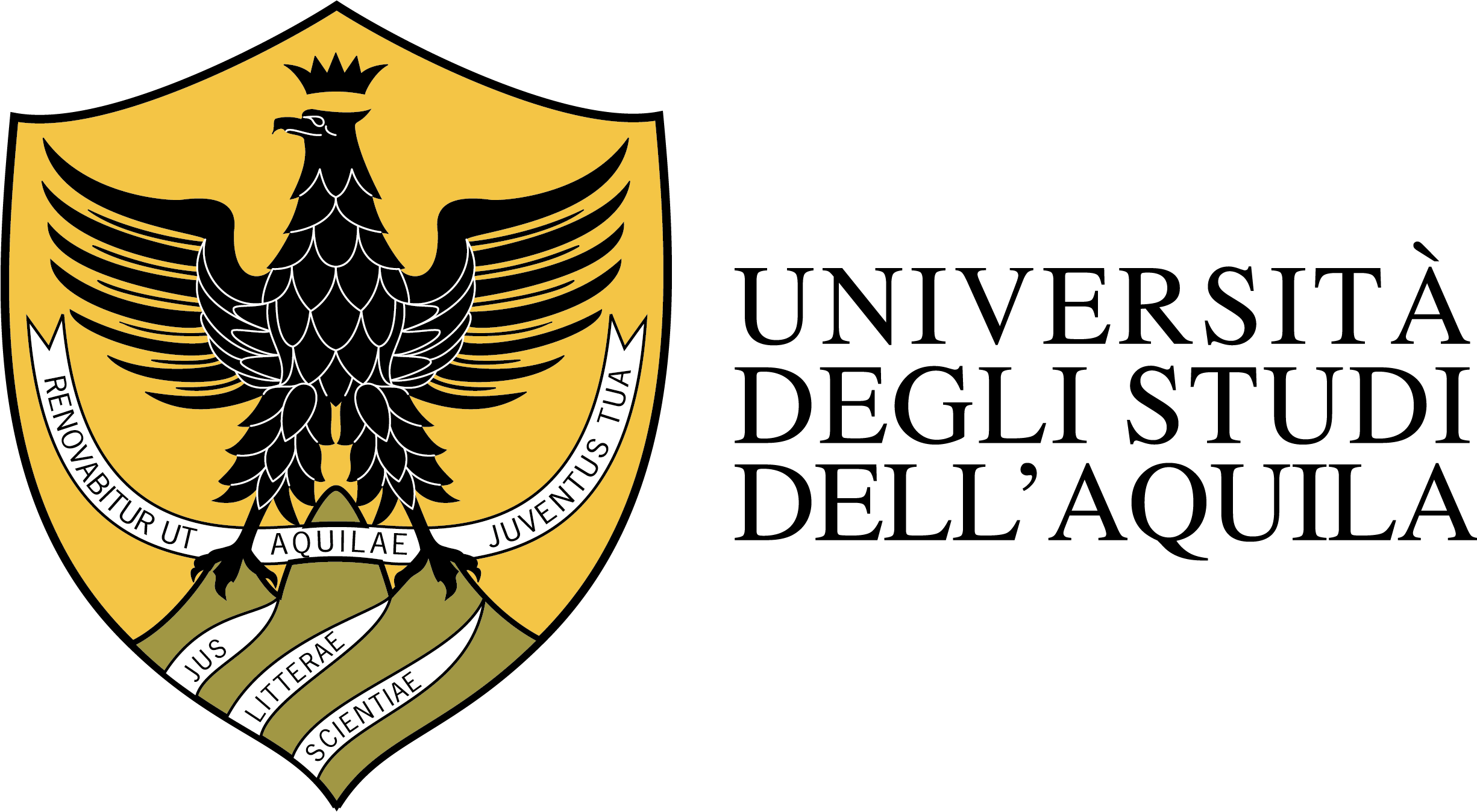Carlo Cantalini
|
Nome: Carlo
Cognome: Cantalini Qualifica: Professore ordinario Settore Scientifico Disciplinare: ING-IND/22 (Scienza E Tecnologia Dei Materiali) Struttura di afferenza: Dipartimento di Ingegneria industriale e dell'informazione e di economia Email: carlo.cantalini Telefono Ufficio: +39 0862434233 Altro telefono: +39 3358432576 |
| Insegnamento | Orario di ricevimento |
|---|
Curriculum scientifico
(Aggiornato il 23-05-2022) versione stampabile (pdf)
versione stampabile (pdf) Carlo Cantalini (last update Dec. 22/05/22)
Full Professor at the “Dipartimento di Ingegneria Industriale e dell’Informazione e di Economia” (DIIIE), Università di L’Aquila – e-mail carlo.cantalini@univaq.it
ERC Sectors
PE5 Synthetic Chemistry and Materials: Materials synthesis, structure-properties relations, functional and advanced materials, molecular architecture, organic chemistry
PE5_ 6. New Materials: Oxides, Composite, Organic-inorganic Hybrid, nanoparticles
PE8 Products and Processes Engineering Product design, process design and Control, construction methods, civil engineering, energy processes, materials engineering
PE8_8 Materials engineering (biomaterials, metals, ceramics, polymers, composites, etc)
Scientific Activity More than 200 International articles
Patents 5 + 1 pending
Scopus H-index 38; total Scopus documents 101, citations 4718
Ranking
In the list of Top World ranking of scientists (top 2%) of Stanford University https://www.imim.es/news/441/stanford-university-publishes-the-worlds-top-2-scientists-ranking-and-clarivate-analytics-publishes-the-highly-cited-researchers-list
Academic Recruitment
Settore Concorsuale 09/D1
Settore Scientifico Disciplinare ING_IND/22 “Scienza e Tecnologia dei Materiali”
National & International Grants (Principal or Associated investigator):
· 2021 – 2023 - Progetto di Ricerca Ind.le - Cluster Tecnologici,“Smart Tow winding”
· 2017-2020 – Progetto POR-FESR – Regione Abruzzo – Titolo - Soluzioni Innovative di Prodotto e di Processo basate sull’utilizzo di Materiali Avanzati”
· 2011-2013 PRIN-09 – Sviluppo di materiali con architettura gerarchica per sensori di ossidi di Azoto a bassa temperatura per il monitoraggio Ambientale”
· 2005-2006 Regione Abruzzo – Progetto Innova Giovani – Monitoraggio gas in aree urbane”
· 1999-2001 C.N.R.-Progetto finalizzato Materiali per L’elettronica MADESS II
Spin-off Company Blu Tecnlogie Srl
Carlo Cantalini is one of the founding members of “BLU Tecnologie Srl”, a spin-off company which capitalize an interdisciplinary approach focussed on research of advanced materials in areas related to microelectronics and sensors. BLU Tecnologie srl R & D activities includes the exploitation of new materials and devices in sensor technology as well as new methods and strategies of detecting noxious gas and bio-markers in complex environments and human exhaled breath.
Education & Academics
Chemical Engineering degree at L’Aquila University (1985). After 3 years experience in industrial companies, joined in 1990 as Assistant Professor the Depart. of Chemistry, Chemical Engineering and Materials of L’Aquila University. From 2001 to 2017 as associate professor (ING/IND-22 Materials Science and Technology). Since 2017 Full Professor in Materials science and Technology – ING-IND.22 (Department of Industrial Engineering – L’Aquila University)
Research Profile
Since the beginning in 1990 Carlo Cantalini focused his research activity on ceramic materials for electrical and electronic applications especially in the field of humidity and gas sensing for environmental monitoring. Initially bulk ceramics nanocrystalline oxides sensors were prepared by mixing and sintering different metal oxides powders to achieve suitable porous structures which maximize water or gas response. Since 1995 in collaboration with the Department of Physics of L’Aquila University thin film metal oxides sensors were prepared by both physical and chemical methods and characterized in terms of Sensitivity, Selectivity and Stability of the electrical response to different gases like NO2, NH3, CO, H2 and water vapour. Different metal oxide semiconductors like Fe2O3, WO3, TiO2, and NiO were investigated, following a chemoresistive principle of transduction, thanks to that the reaction of a target gases with the sensor surface, results in a change of the electron-holes carriers’ concentration. Beside Microstructural features, he specifically examined the influence of the concentration of surface defects and their time-evolution as respect to the longterm stability of the sensor electrical response.
Since 2000 he pioneered the research of chemoresistive gas sensors utilizing carbon nanotubes (CNTs) in collaboration with the university of Perugia, addressing, for the first time, the importance of preliminary thermal treatments during the CNTs’ deposition to stabilize sensor response. First principles theoretical calculations were also applied to investigate the adsorption and response mechanism of gas molecules over the CNTs surface, receiving for both these studies a considerable number of citations and invited contribution to international congresses.
Since 2010 in collaboration with the department of Physics of L’Aquila University he paved the way for the exploitation of 2D-layered Graphene Oxides (GO) as a candidate material for gas sensing applications, focusing on a simple and effective deposition methods to produce thin film GO sensors. Following this research some particular aspects like cross sensitivity and selectivity of the 2D-layerd were addressed, highlighting the influence of step-edges as respect to internal terraces over sensor response.
Since 2010 the optimization of appropriate and scalable top-down exfoliation techniques which make use of suitable solvents and combined milling and sonication techniques was employed for the production of reproducible few layer exfoliated transition metal dichalcogenides (TMDs) like MoSe2, WS2 and more recently SnSe2, demonstrating their suitability as novel microstructures for gas sensing applications. By means of experiments and theory it was demonstrated that an intrinsic weakness of TMDs, represented by their attitude to be oxidized, may turn to an extraordinary advantage in gas sensing applications. Remarkably it was demonstrated that the formation of a self-assembled Metal Oxide/TDMs heterostructure is particularly efficient in gas sensing, opening wide scenarios for a new class of materials and unexplored new mechanisms in gas sensing applications.
Editor in Chief - Sensor Journal – MDPI -Special Issue “Novel Materials for Gas Sensors”
Associate Editor – https://www.frontiersin.org/journals/sensors#editorial-board Frontiers in Sensors – Micro and Nano Sensors
Chair of the first international congress New-Times – New trends in materials Science and Engineering al link https://new-times.org
Invited, Key note and Plenary Presentations
Attended so far more than 50 conferences with more than 50 communications at conferences and 10 invited contributions
Reviewer activity
Peer reviewer of 10 international peer-reviewed journals associated with publishers like, Elsevier, American Chemical society, Royal Society of Chemistry, Springer
Supervision of theses
Tutor of 41 undergraduate students at the Departmet of Industrial Engineering (DIIIE), L’Aquila University, and tutor of 6 PhD student and supervisor of 1 research assistants at L’Aquila University


